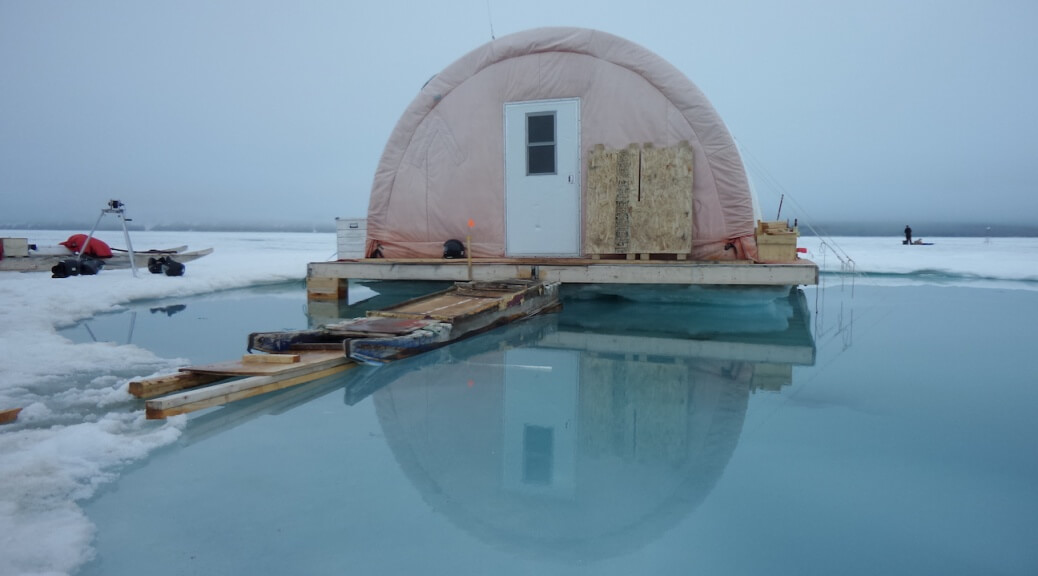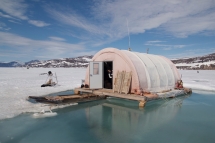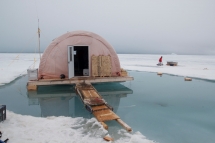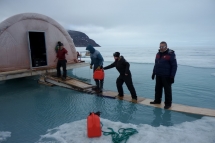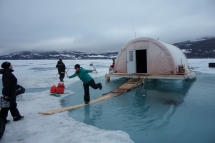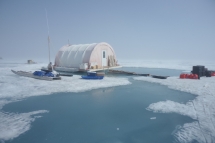I arrived at the ice camp three weeks ago and during that time many things changed: the nearby mountain tops lost the remainder of their snow cover, the sea ice’s snow vanished and melt ponds just appeared, there are many more birds and seals than there had been, the phytoplankton bloom started, … But to me the most prominent trace of change was the access to the “Polarhaven” tent at the ice camp, where I went for water sampling and CTD operations every other day.
Every artificial thing put onto the snow/ice absorbs more heat than its surrounding, because of the snow/ice’s high albedo. The ice camp’s cabin and tent are no exception. So when I arrived in mid-June, there was already a sizable pool of meltwater around the Polarheaven – but a snow-built bridge to its front door still existed. At least for the first day, when it collapsed and was quickly replaced by a small cardboard palette. With intense sun, the melting continued and the palette proved to be too small, so an old sledge (called Qamutik in Inuktit) was organized and put there instead. Only the first of several improvements with time, to provide safe (and dry) access to the tent (which still sits atop of an about 1 m thick layer of sea ice!).
Like the cabin, which was pulled to dry land on July 3, the tent (and a lot of the ice camp equipment) will soon be transported back to town, while the ice camp site is still safely accessible by snowmobile and Qamutik.

